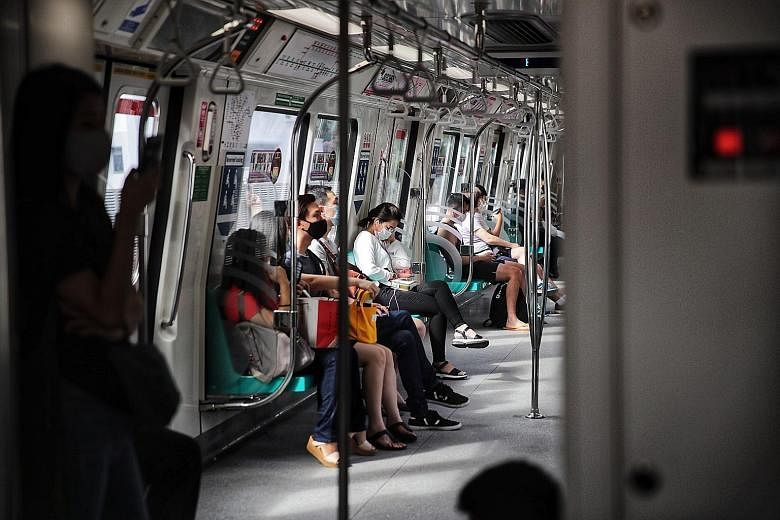More than 40 per cent of people around the world have cut back on public transport rides, with 8.5 per cent staying away completely since the Covid-19 pandemic started about a year ago.
In a survey done last month, Israeli mobility app provider Moovit found that of those who still needed to get around, 4.6 per cent had switched to other modes of transport.
The firm found that the frequency of public transport use did not change for 38 per cent of respondents. Another 7.6 per cent of respondents said their use of buses and trains had actually gone up since the pandemic started.
Moovit said it polled "tens of thousands" of respondents in more than 100 cities across 28 countries, pointing out that "at the lowest point in 2020, many cities around the world experienced more than an 80 per cent drop in public transportation ridership".
The December survey revealed that the aversion to public transport was less severe in Singapore.
More than half of the respondents said their use of public transport had not changed since the outbreak, while another 8.2 per cent said their trips had actually risen.
Less than 2 per cent of those polled said they were still staying away from buses and trains, while just over 30 per cent said they were using them less frequently.
Only 1.4 per cent said they had switched to other modes of transport. This could be because the alternative is costly in relation to other parts of the world.
Moovit also surveyed commuters on what it would take for them to return to using public transport.
Of nearly a dozen measures, two had the highest number of votes. One, having real-time arrival information so that waiting at crowded bus stops can be avoided. Two, increasing service frequency so that vehicles can be less packed.
In Singapore, these two measures were also the top picks.
Surprisingly, 28.5 per cent of those polled here said having contactless payment would also persuade them to go back to using buses and trains.
Singapore University of Social Sciences transport economist Walter Theseira said he found the survey results with respect to contactless payment and real-time information - both of which are available here - "hard to take seriously".
But the point about increasing service frequency to reduce crowdedness is "interesting", he said, adding that it is something commuters would like to have whether there is a pandemic or not.
"The problem is system cost," he said. "Public transit's economies of scale work only with high system utilisation - the crowded buses basically pay for the empty buses.
"The constraint on lowering crowdedness during peak hours is the staggering cost of building extra capacity that is used only for the peak of the peak."
This goal can, however, be achieved if travel demand is spread out throughout the day, he added.
But Moovit chief growth and marketing officer Yovav Meydad said some cities have done exactly that. These include the Italian cities of Milan, Naples and Rome.
Associate Professor Theseira pointed out that "most people have no problem being in crowded environments voluntarily once they perceive that the Covid-19 risk is manageable - the crowds at shopping malls are daily evidence of that".


